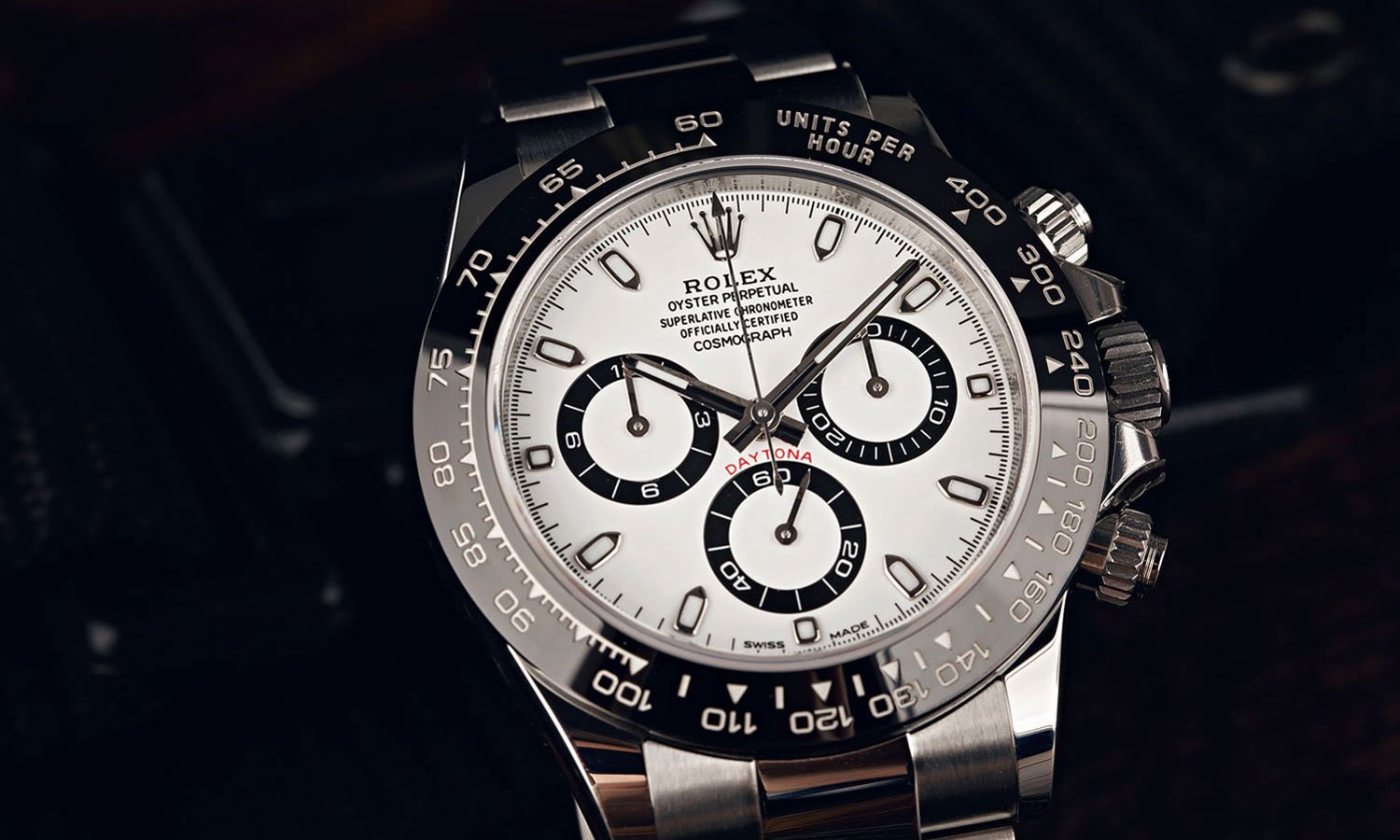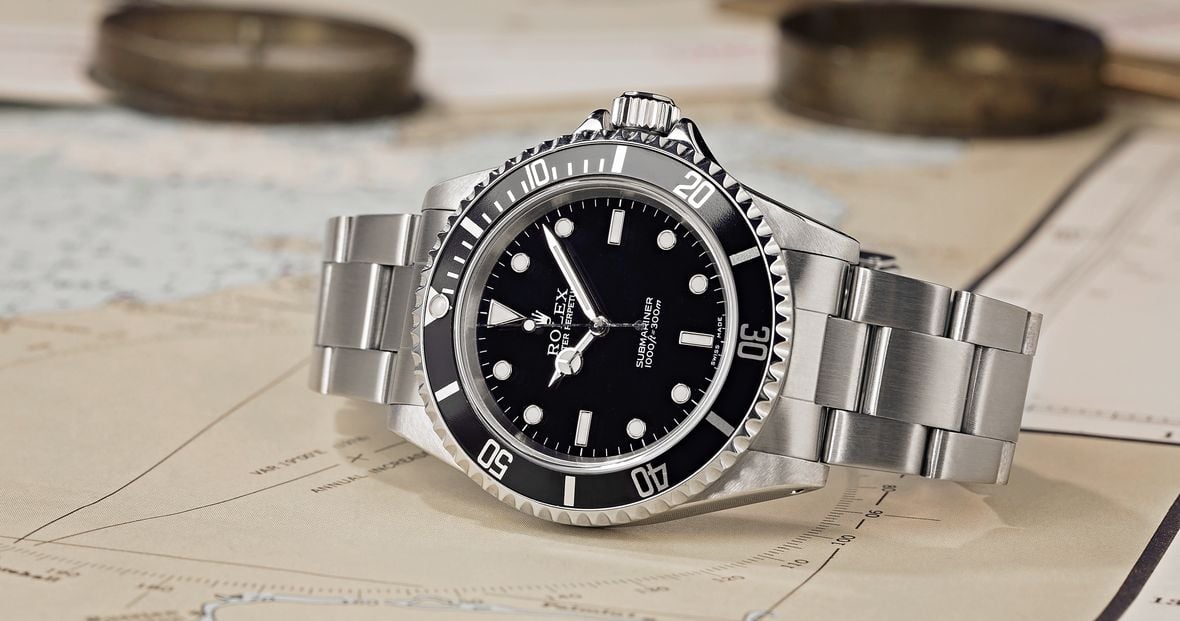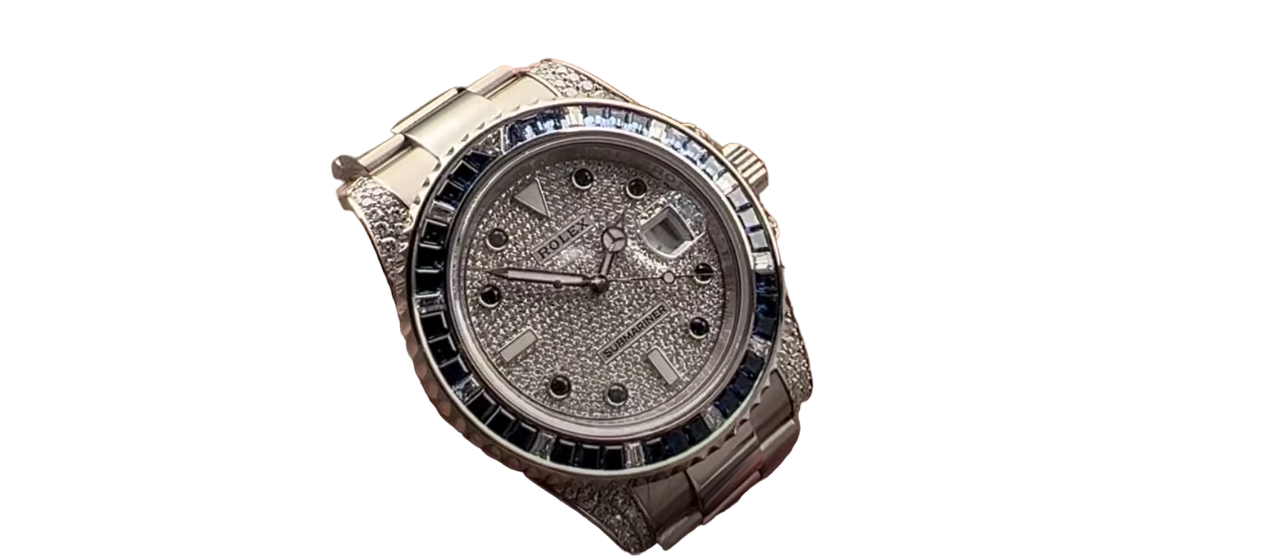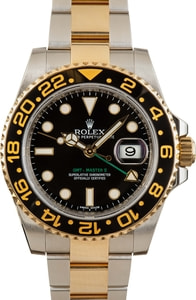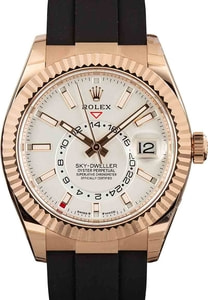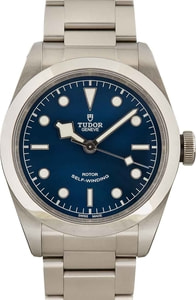The Daytona is, without a doubt, Rolex’s most famous chronograph model. However, it is sometimes overlooked that a Rolex does, in fact, manufacture another chronograph collection – the Yacht-Master II. While both are technically chronograph watches, they are actually very different timepieces, both inside and out. Today we will be comparing the brand’s duo of contemporary chronograph models, the Rolex Daytona vs. Yacht-Master II.
So, how do these two Rolex chronograph watches differ when it comes to their designs and functionality? Let’s find out as we review these stylish used Rolex watch models.
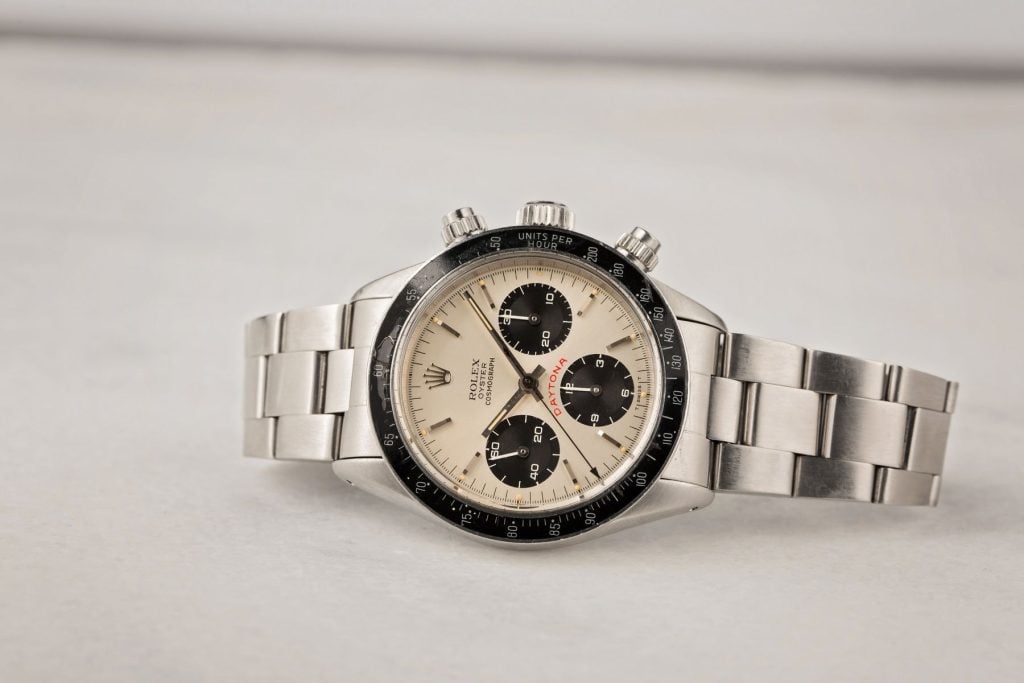
Origins: Daytona vs. Yacht-Master II
Rolex first unleashed the Cosmograph Daytona in 1963 as a chronograph dedicated to motorsports. However, as manually-wound models with 38mm cases, vintage Daytona watches are significantly different from the versions of today. It was only in 2000 that we saw the first iterations of today’s Daytona models; that is to say, 40mm watches that run on in-house automatic chronograph movements.
These editions of the Rolex Daytona collection carry six-digit reference numbers and are powered by the Caliber 4130. Prior to this generation, there were the five-digit Daytona models fitted with Rolex-modified, Zenith El Primero automatic movements, which were produced from 1988 until 2000.
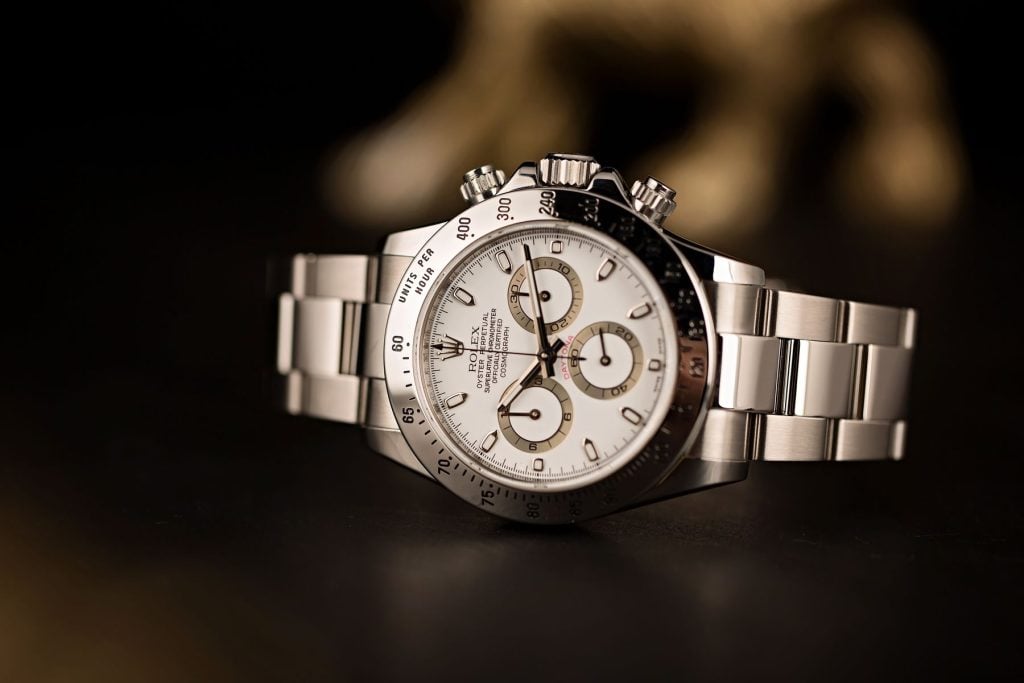
In total, the Daytona utilizes three different generations of movements. First was the hand-wound generation, followed by the automatic Zenith generation, and then the automatic in-house Rolex caliber 4130. The collection has one of the most intriguing histories on the market, spanning decades and producing countless design variations, and even the famous Paul Newman Daytona that fetched one of the highest sums on the secondary market of nearly $18 million.
On the other hand, the Yacht-Master II is a relatively new Rolex model, having made its debut in 2007. What’s more, when it was released, the Yacht-Master II was Rolex’s largest watch, sporting a 44mm case. As its name implies, the Rolex Yacht-Master II was developed for the sailing crowd, rather than the automobile racing crew. In addition to its over-the-top case size and design, the Yacht-Master II was also the brand’s most complex watch (until the introduction of the Sky-Dweller in 2012), equipped with a regatta chronograph, complete with mechanical memory and fly-back functionality for facilitated synchronization.
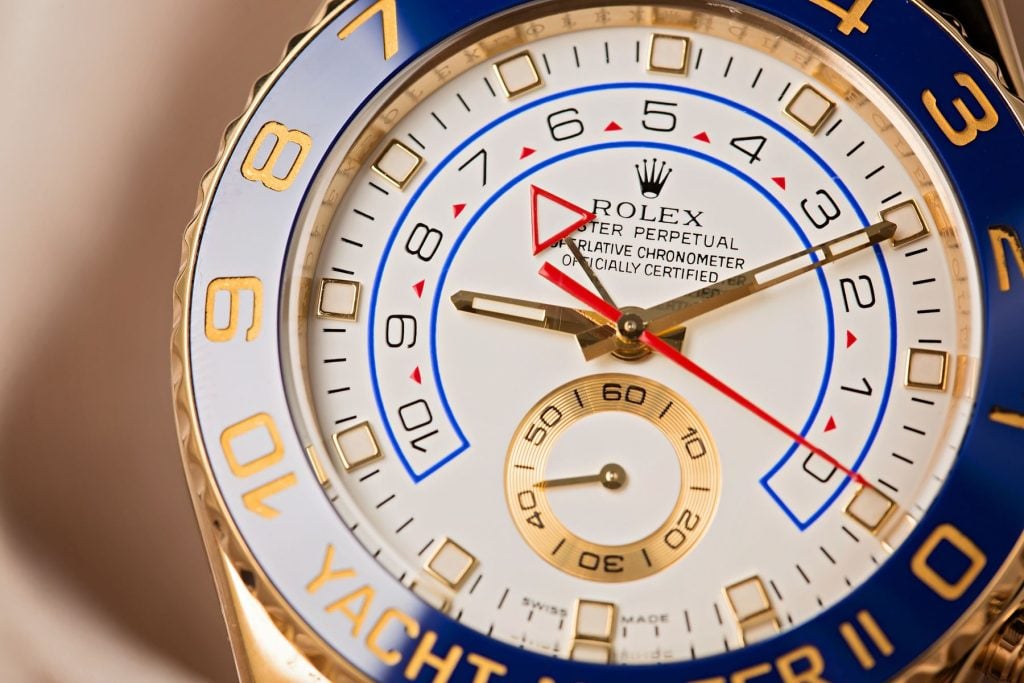
Design: Daytona vs. Yacht-Master II
The Daytona’s 40mm case comes fitted with a pair of screw-down chronograph pushers flanking its screw-down winding crown. This is to keep any moisture out of the watch, ensuring its 100-meter water resistance. The fixed bezels of the Daytona watches – crafted from either metal or Cerachrom (ceramic) – are engraved with a tachymeter scale (except for the gem-set bezel editions), while the dials house a trio of subsidiary registers.
In true Rolex fashion, there are plenty of different dial colors and index styles to choose from. Material options within the six-digit Daytona family include stainless steel, yellow gold, white gold, Everose gold, two-tone steel and yellow gold, and platinum. Most Daytona models come with metal Oyster bracelets however, there are some gold Daytona watches that are presented on black rubber Oysterflex bracelets as well. Rolex previously manufactured leather-strap versions but they are no longer in production.
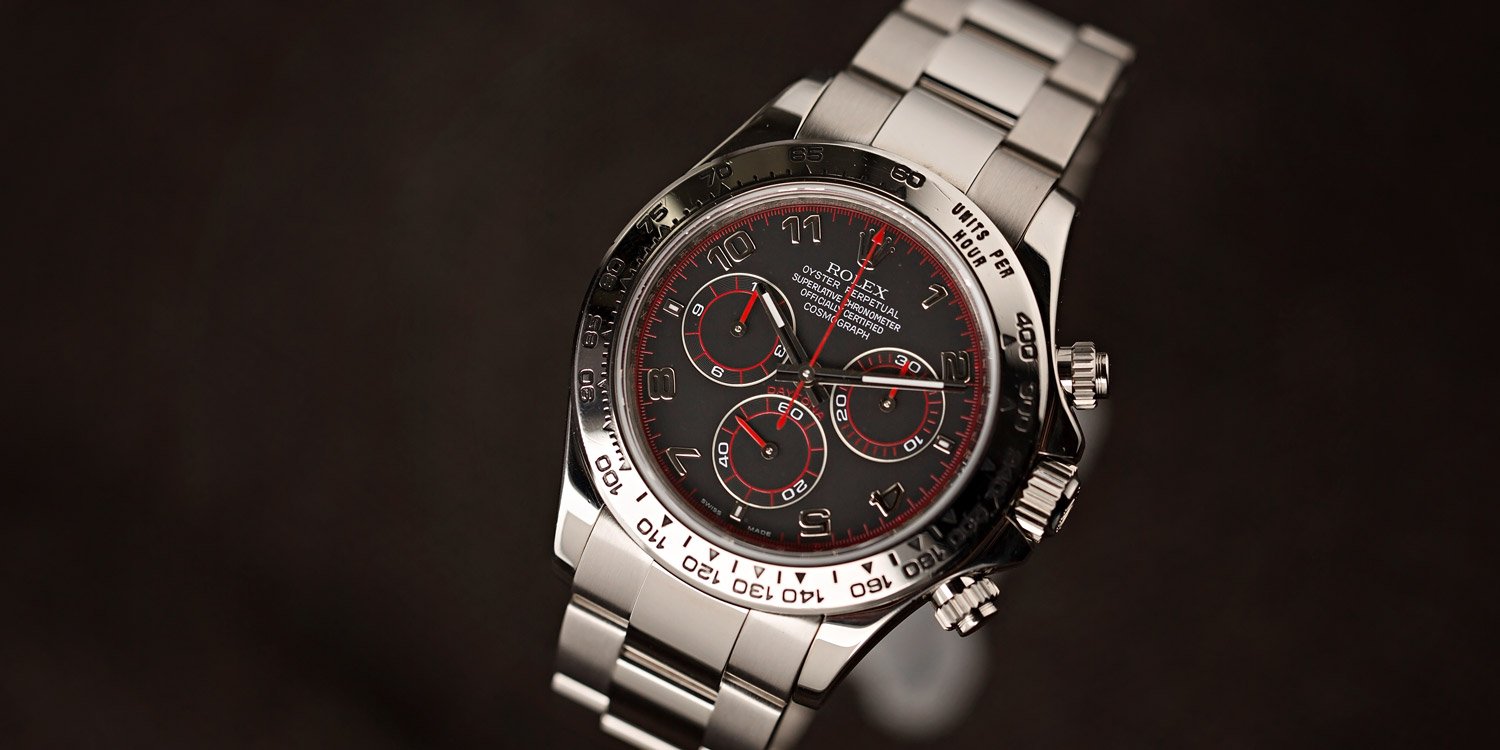
In direct contrast to the Daytona’s classic looks and restrained proportions, the Yacht-Master II is proudly big, bold, and badass. Its bezel – either in bright blue Cerachrom (ceramic) or platinum – sits on the 44mm case and is emblazoned with the “YACHT-MASTER II” name, along with numbers 1 – 10. The white dial with red and blue accents offers three distinct areas for three readings: the center hands, the 10-minute countdown display, and the running seconds sub-dial.
Early editions of the Yacht-Master II included straight hour and minute hands until around 2017, while current versions have the familiar Mercedes-style hands. The hour markers received a small upgrade from blue to white gold surrounds to match the hands. Additionally, Rolex replaced the square hour marker at 12 o’clock with an inverted triangle and the marker at 6 o’clock with a slightly elongated baton hour marker. Material choices of the Yacht-Master II include yellow gold, white gold (with a platinum bezel), stainless steel, and two-tone Everose gold and steel. Additionally, all Yacht-Master II watches come with matching metal Oyster bracelets.
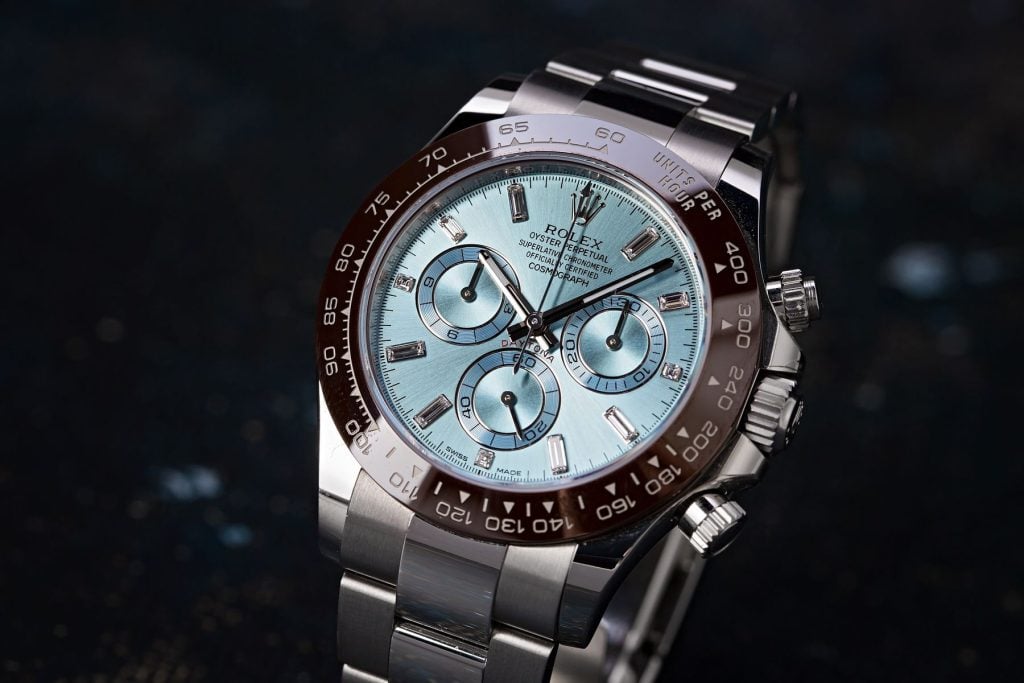
Calibers and Functionality: Daytona vs. Yacht-Master II
Manufactured entirely in-house, the Daytona’s Caliber 4130 has been heralded by many watch enthusiasts as one of the most reliable and robust automatic chronograph movements on the market. One of its defining features is the use of a vertical (rather than lateral) clutch to activate the chronograph. This not only permits the chronograph hand to run smoothly without any signs of “jittering,” but also allows the chronograph function to run for a long time with no influence on the Daytona’s precision. Thanks to Caliber 4130, the Daytona features a chronograph hand accurate to within 1/8 of a second, a 30-minute counter at 3, a 12-hour counter at 9, a small seconds register at 6, and a power reserve of 72 hours.
When Rolex launched the Yacht-Master II in 2007, inside the watch was the Caliber 4160, which was then upgraded to Caliber 4161 in 2013. While these in-house chronograph calibers are based on the Caliber 4130, they are much more complex in terms of functionality. Rolex maintains that the Caliber 4160/4161 was the result of over 35,000 hours of development.
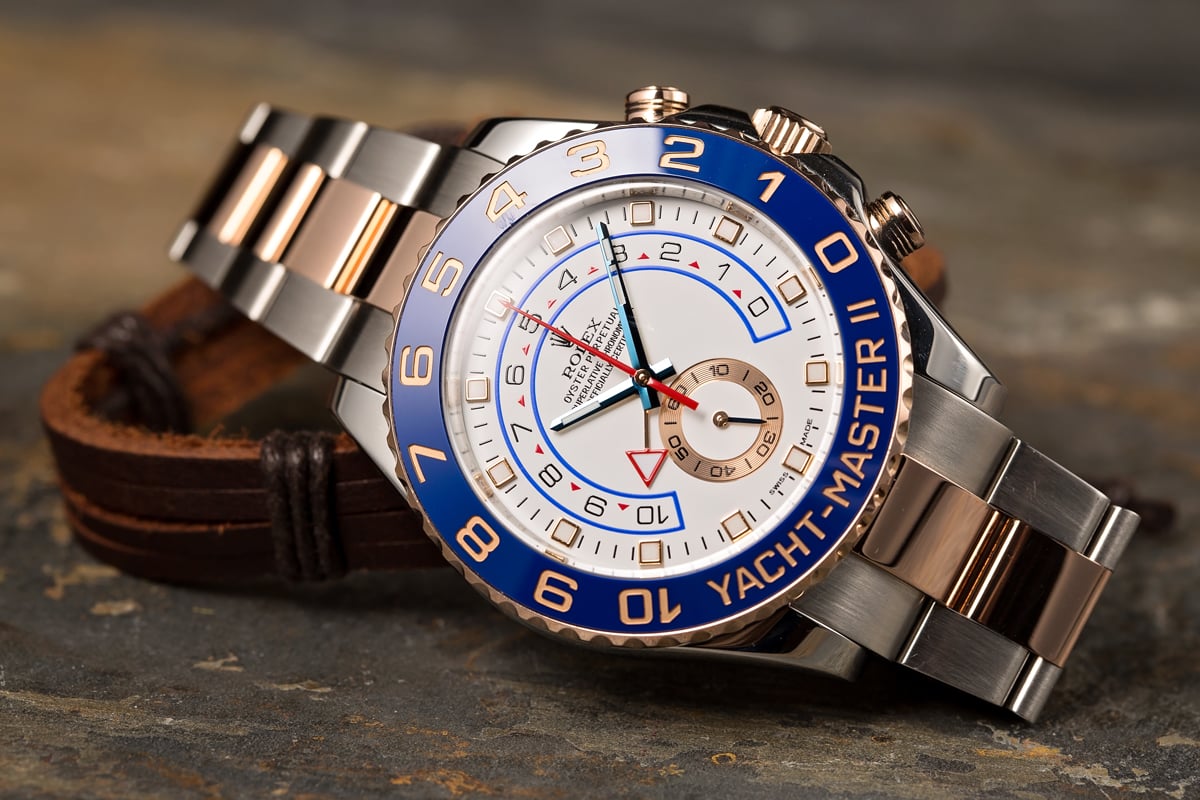
Most intriguing, the bezel on the Yacht-Master II is not just for show. Instead, turning it allows the user to flip through what functions of the watch to set. And one of these functions includes a programmable countdown timer (from 1 – 10 minutes), which also memorizes the desired setting t when you reset the timer. So, if you love a seven-minute jammy egg or a four-minute brew, then your Yacht-Master II is there for you.
The central chronograph hand also has flyback functionality, which means that you can reset it back to zero with the press of a single button while it is in motion. Additionally, just like its base caliber, the Cal. 4160/4161 also has a 72-hour power reserve.
While both chronographs have countless everyday applications, they cater to two totally different niches. The Daytona, with its motorsport roots, was initially developed to help the wearer record various stats while driving, such as speed, distance traveled, and elapsed time. On the other hand, the Yacht-Master II was inspired by regatta and features a race countdown mechanism.
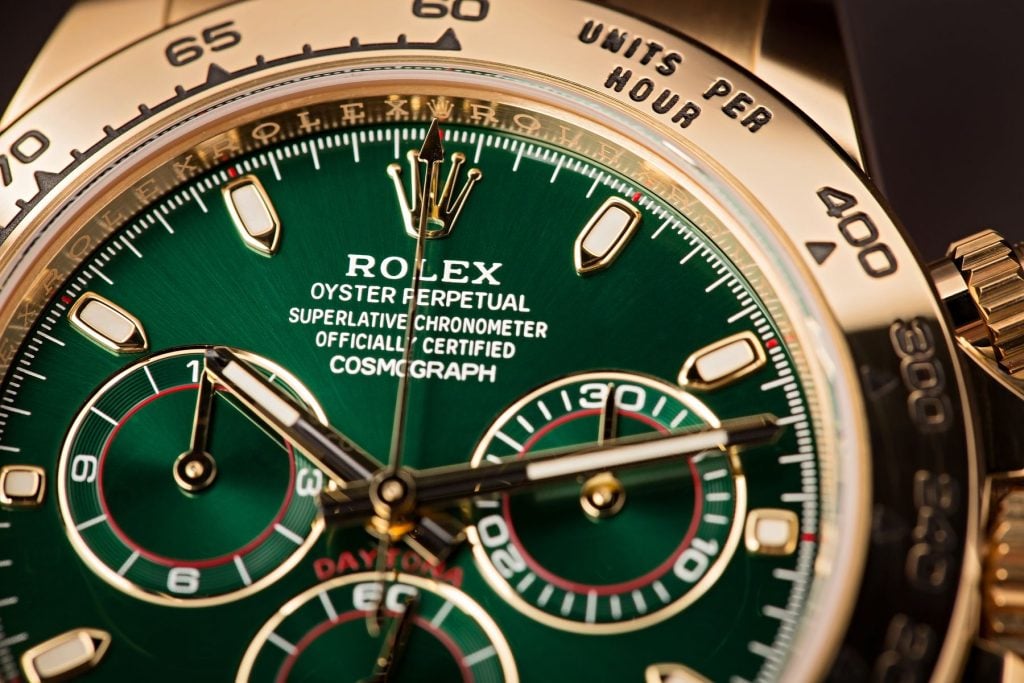
How to Use The Bezels on Daytona vs. Yacht-Master II
The Daytona bezel is fixed, so its primary function relies on the chronograph movement. To activate the chronograph, press the top pusher above the crown. The chronograph seconds hand will start to race around the dial. The top pusher will also stop the chronograph while the bottom pusher resets it to zero. For example, to measure speed, simply activate the chronograph by pressing the top pusher. Once you’ve driven a mile, stop the chronograph by pressing the top pusher again. The chronograph hand will point to the corresponding speed on the Tachymeter bezel.
The Yacht-Master II bezel is connected to the movement and it is often referred to as a “Ring Command Bezel.” To use the programmable regatta countdown, you first need to unscrew the crown and rotate the bezel counterclockwise 90 degrees. Then, press the bottom pusher and turn the crown clockwise to move the arrow hand to the desired 10-minute count-down increment. Once the bezel is rotated back to its original position and the crown is screwed back into the case, you can press the top pusher to start or stop the countdown. The chronograph seconds hand will begin to move around the dial, once every minute. The famous flyback and fly-forward functionality is engaged by pressing the bottom pusher, sending the arrow hand backwards or forwards to the nearest minute in the countdown.
Side-by-side, these two Rolex chronographs look nothing alike. The Daytona offers traditional chronograph styling and functionality, while the Yacht-Master II is more aggressively designed and offers a niche complication in the form of a regatta chronograph. So, which one would be your pick?
